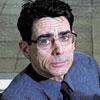
Music
BBC SSO
City Halls, Glasgow
Keith Bruce, five stars
WHATEVER the personal or political reasons that led Michael Tippett to suppress his early B flat symphony, it seems to be accepted that the musical one was the huge debt it owes to Jean Sibelius, who had fallen from favour by the years after the Second World War. Hearing it in a revision now 80 years old, effectively a world premiere of that version, and unheard in any form since the 1930s, it certainly does often sound very like Sibelius, although at times it also recalls Wagner and even Brahms. What it does not sound like very much is Michael Tippett, as we know his four symphonies.
Nonetheless it well deserves rediscovery as the young composer had no shortage of melodic ideas and plenty skill in deploying instrumental colour. With solo clarinet both beginning the piece and signalling changes of direction later, it is curious how the rhythmic tension in the middle of the finale is resolved in what is really quite an old fashioned way, while the last two pages of the score sound quite uncharacteristically English.
In some ways it did the work no favours that Martyn Brabbins conducted it in a programme that culminated in Stravinsky’s Petrushka, a work that – performed as well as it was here – will always sound exciting in any context. In the composer’s post Second War version the common elements of the pre-First War original with The Rite of Spring are unmistakeable, for all that it is lighter in tone. No-one in the large orchestra gets to sit on their hands, but pianist Lynda Cochrane and principal trumpet Mark O’Keeffe put in particularly sterling work.
In between it was the chance for principal horn Alberto Menendez Escribano to shine on Mozart’s Fourth Horn Concerto. The tone and flow of his playing had exactly the balance of virtuosity and feel for ensemble that the composer surely intended – this is a work from the years that produced The Marriage of Figaro and Don Giovanni. In a nice bit of programming, the concerto’s famous last movement was followed by a scripted encore of a stand-alone Rondo for the same forces which only underlined the operatic comparisons as well as the hunting-horn origins of the instrument.



Why are you making commenting on The Herald only available to subscribers?
It should have been a safe space for informed debate, somewhere for readers to discuss issues around the biggest stories of the day, but all too often the below the line comments on most websites have become bogged down by off-topic discussions and abuse.
heraldscotland.com is tackling this problem by allowing only subscribers to comment.
We are doing this to improve the experience for our loyal readers and we believe it will reduce the ability of trolls and troublemakers, who occasionally find their way onto our site, to abuse our journalists and readers. We also hope it will help the comments section fulfil its promise as a part of Scotland's conversation with itself.
We are lucky at The Herald. We are read by an informed, educated readership who can add their knowledge and insights to our stories.
That is invaluable.
We are making the subscriber-only change to support our valued readers, who tell us they don't want the site cluttered up with irrelevant comments, untruths and abuse.
In the past, the journalist’s job was to collect and distribute information to the audience. Technology means that readers can shape a discussion. We look forward to hearing from you on heraldscotland.com
Comments & Moderation
Readers’ comments: You are personally liable for the content of any comments you upload to this website, so please act responsibly. We do not pre-moderate or monitor readers’ comments appearing on our websites, but we do post-moderate in response to complaints we receive or otherwise when a potential problem comes to our attention. You can make a complaint by using the ‘report this post’ link . We may then apply our discretion under the user terms to amend or delete comments.
Post moderation is undertaken full-time 9am-6pm on weekdays, and on a part-time basis outwith those hours.
Read the rules here